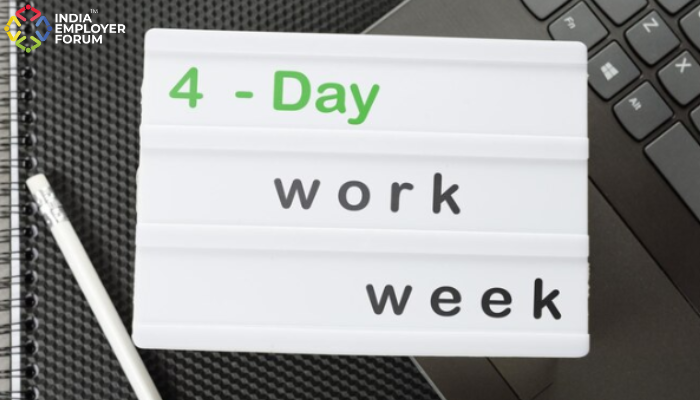It’s been over four months since the World Health Organization characterized the coronavirus outbreak as a pandemic. Since that time, a lot has changed. Nations have put lockdown measures in place, forcing people to stay indoors and every other thing to shut down. The situation has created a challenging landscape for businesses globally. Despite this massive disruption in the world of work, many organizations have been reimagining workplace and finding new and innovative ways to maintain a significant level of productivity. These innovations, which mainly involve remote working, are touted by many as becoming the future of work post COVID.
While the infection numbers are still up, many countries are beginning to record fewer cases, causing them to relax their lockdown measures. Many people, especially the remote workers, are eager to get back to their offices. But as there is no vaccine for the disease yet, experts warn about the possibility of a second wave of infections hitting many countries.
In light of this, organizations must take measures to ensure the workplace is safe and prevents employees from getting or transmitting the disease. Redesigning workplaces is crucial to achieving this because the existing workstation design doesn’t provide adequate protection for employees. According to experts, however, creating low-risk workplaces would require a combination of short-term fixes aimed at boosting worker confidence. Also, reimagining workplace will involve organizations reducing the number of staff present in the office at any one time, alongside creating plans for long-term design upgrades and modifications that put hygiene at the heart of workplace planning.
You might also be interested to read: Trends Transforming Workplace : A 2020 Overview
Nevertheless, as employers are aware of the importance of health and safety around the workplace, they’re also concerned about the cost implications of redesigning workplaces. As much as they’re hypersensitive to the potential for liability if employees get sick at work, companies are not likely to make any major redesigning soon. Businesses are wary of investing significantly in solutions that might be rendered ineffective in a matter of months because of the discovery of a vaccine.
With that said, business leaders understand that a high-risk environment at work is an antithesis to productivity. Also, they are conversant with the importance of workplace design in employee engagement. As such, many companies are looking to implement low-cost changes to workstation design that will provide employees with a sense of safety.
The sneeze guard
The sneeze guard is a low-cost, high-impact measure organizations are using to reimagining workplace. A sneeze guard is an acrylic or glass screen designed to protect food or people from exposure to respiratory droplets, which are dispensed through coughing, sneezing, or even talking, according to Wikipedia. It’s generally known that the coronavirus spreads through respiratory droplets that come from sneezing, coughing, or talking. With the sneeze guard installed in every employee’s workstation, organizations reduce the chances of spreading or contracting the virus in the workplace. Until scientists come up with a vaccine, creating a physical barrier will go a long way in reducing a high-risk environment in the workplace.
Distributed office
Organizations have adopted remote working strategies to keep their workers engaged during the beginning of the lockdown. However, for a couple of reasons, many enterprises couldn’t benefit from or use telecommuting effectively. Now that nations are relaxing lockdown measures, and businesses can open up, businesses can incorporate a distributed office strategy to allay the concerns about work, workplace, and workforce.
If there’s any positive that has come with the coronavirus, it’s that the pandemic has brought about change. Before the coronavirus outbreak, remote working was a privilege allowed only to a few. Now, that has changed. Another thing that has received negative reviews during the pandemic is the open-plan workplace because it doesn’t provide enough protection for people. As such, part of reimagining workplace sees that organizations go back to the out-of-favor small private offices.
Another option that works even better is the idea of organizations having distributed offices. When an organization sets up a set of smaller branch offices in areas where its employees live, it reduces the chances of employees getting exposed and infected. With employees having their work close to their houses, their exposure to the virus via public transport reduces. It can also improve productivity by enabling employee cooperation and relationships, which is good for improved mental health.
Alternating employee workdays
Another low-cost strategic solution that organizations are adopting is the rotation of employee workdays. With this system in place, a smaller group of employees go to work on alternate days and shifts, avoiding crowded offices and rush-hour transport. Although adopting this type of staggered workforce will require comprehensive workforce planning, it’s a strategy that can revolutionize the world of work post-COVID.
To adopt the strategy of a “staggered workforce,” organizations need to identify jobs that can only be done on-site. Using a “staggered workforce” alongside the already established telecommuting system, organizations can create low-risk workplaces while keeping their bottom line from tanking in the end.
Contactless office
A contactless office is another way business leaders are reimagining workplace. As stated earlier, the coronavirus has brought about a change in how we live and do things. And many people believe that these changes will remain long after the coronavirus is gone. If anything, the pandemic has exposed weaknesses in our lifestyle, showing us how our way of life can lead to the wiping of humanity.
One of the changes that have come with the pandemic is the use of contactless systems. The delivery companies have used the system to complete customer orders, and now, organizations are looking to adopt a contactless system within the workplace. A contactless office will require a substantial investment in technology. Nevertheless, with a contactless office in place, employees can operate elevators and coffee machines with their smartphones; thereby, eliminating the need to press communal buttons.
There’s also the idea that companies may aggressively monitor for sick employees. One possibility is embedding sensors underneath desks to check body temperatures and employing the services of a facility manager monitors for feverish workers. While this type of technology already exists, it raises many privacy issues, causing its delayed integration into the workplace. In its place, fewer organizations have installed the less controversial body thermal scanner that beeps when anyone standing in front of it has a temperature. With this technology in place, the organization can send home employees that look sick.
In the coming future, even if COVID-19 has a vaccine, the current status quo of work, workplace, and workforce is likely to undergo a monumental transformation. Safety, social distancing, and offices that have a hospital-like feature, etc. will all become a standard norm with technology at the forefront, enabling all these changes.
References:
- How offices will change after the coronavirus by Jessica Mudditt||May 14, 2020
- Sneeze Guard by Wikipedia||August 1, 2020
- WHO timeline – Covid-19||April 27, 2020
You might also be interested to read:
Related Topics:




